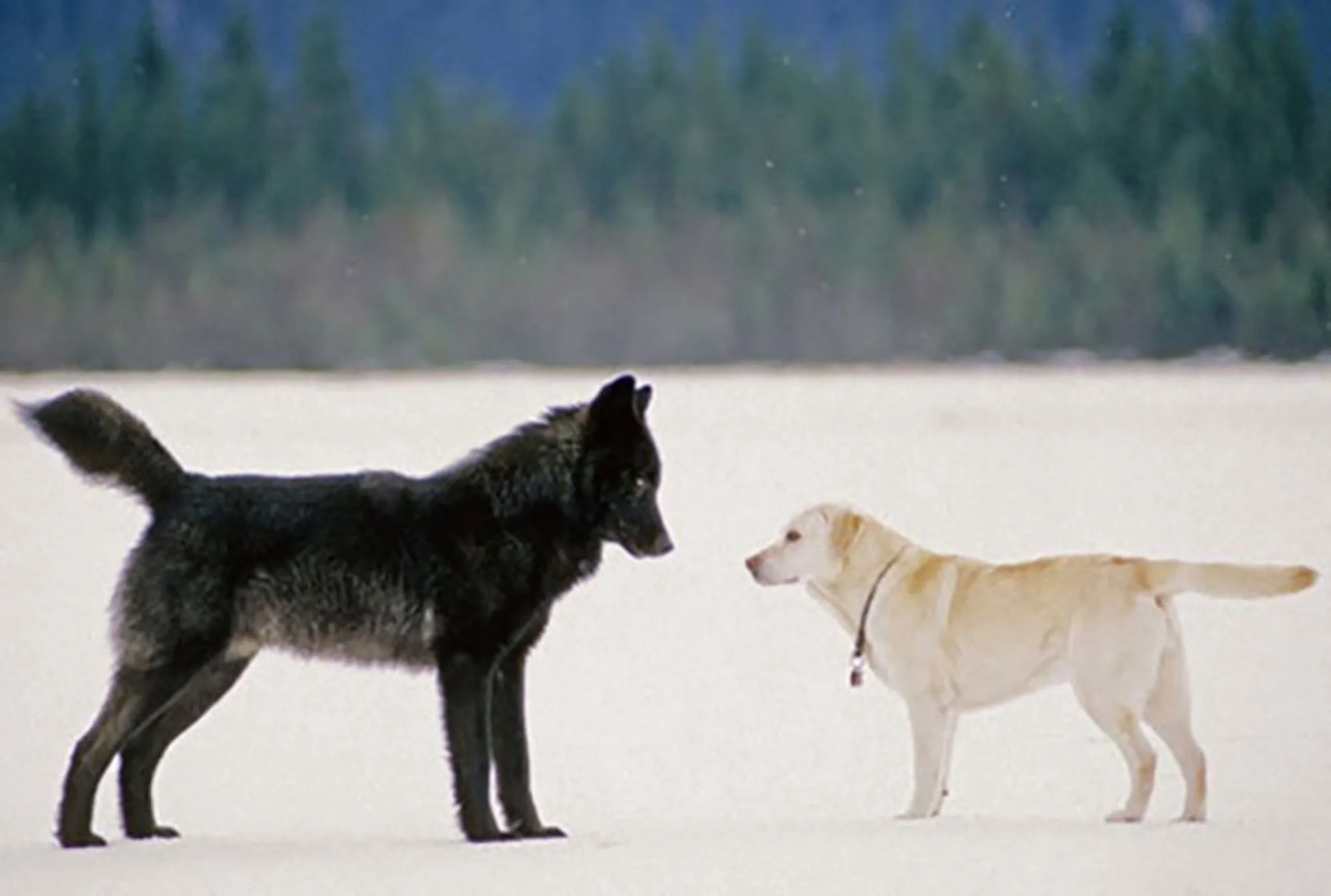Black wolves should probably not exist. The same species as their gray relatives, these wolves have a genetic mutation that causes them to produces excess melanin, a pigment responsible for coat color. The origin of black wolves has long been a puzzle. Unlike domestic animals, wild species usually don't exhibit such dramatic variations in coloration, especially within the same population. While all tigers are orange and striped, and all grizzly bears are brown, "gray" wolves range from pure white to brown to red to black.
Researchers at Stanford University have discovered that dogs may be the cause of the wolves' unusual coloration. Dogs have a unique gene for melanism, which is also shared by European, Asian and American black wolves. Scientists estimate that the gene arose somewhere between 12,779 and 121,182 years ago, with a preferred time of around 50,000 years. Even if European wolves were the first to don a black coat, it was domestic dogs that brought the gene to the wolves (and coyotes) of North America.
Most new mutations tend to disappear within a few generations. With North American wolf, however, this accidental genetic loaner from dogs has become a stable part of their population's DNA. Clearly, black wolves derive some benefit from their coloration. The reasons why are still a mystery: Black coat color doesn't aid in camouflage, but since it occurs more frequently in southern, forest-dwelling wolves, it may have some advantage for life in warmer climates.
The melanism gene in wolves is one of the few instances, perhaps even the only instance, in which interbreeding with a domestic animal has conferred an adaptive edge on a wild animal. As climate change progresses, and forests march northward, it may be that the "gray" wolf population will soon switch to black, all thanks to some melanistic, prehistoric pooches.
Via the New York Times. Image via Carnivora.


Comments (0)
Share your thoughts and join the technology debate!
No comments yet
Be the first to share your thoughts!